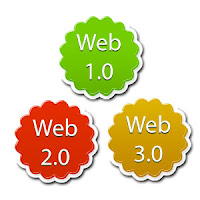The
terms collaborative learning and cooperative learning sometimes are used
interchangeably. This is reasonable, as both favor small-group active student
participation over passive, lecture-based teaching and each require a specific
task to be completed. Each strategy inherently supports a discovery based
approach to learning. The two methods assign various group roles though
collaborative learning can have fewer roles assigned. In both situations,
student members are required to possess group skills though cooperative
learning may include this as a instructional goal. Each plan comes with a
framework upon which the group's activity resides, but cooperative learning is
usually more structurally defined than collaborative learning (Cooper and
Robinson, 1997; Smith and MacGregor, 1992; Rockwood, 1995a, 1995b). Let
us try to give some features about these types of learning approaches to give
an insight of the main differences.
 Cooperative
Learning is an instructional
strategy that simultaneously addresses academic and social skill learning by students.
It is an instructional strategy and has been reported to be highly successful
in the classroom because of its increasing need for interdependence in all
levels providing students with the tools to effectively learn from each other.
Students work towards fulfilling academic and social skill goals that are
clearly stated. It is a team approach where the success of the group depends
upon everyone pulling his or her weight.
Cooperative
Learning is an instructional
strategy that simultaneously addresses academic and social skill learning by students.
It is an instructional strategy and has been reported to be highly successful
in the classroom because of its increasing need for interdependence in all
levels providing students with the tools to effectively learn from each other.
Students work towards fulfilling academic and social skill goals that are
clearly stated. It is a team approach where the success of the group depends
upon everyone pulling his or her weight.
Collaborative
learning is commonly illustrated
when groups of students work together to search for understanding, meaning, or
solutions or to create an artifact or product of their learning. Further,
collaborative learning redefines traditional student-teacher relationship in
the classroom because activities can include collaborative writing, group
projects, joint problem solving, debates, study teams, and other activities in which students team together to explore a significant
question or create a meaningful project. (Cooperative Learning, n.d)
Although both approaches
have been just defined, the distinction between the two is still blurry. Practioners point out that these two
terms are different. Rockwood (Rockwood, 1995a, 1995b) characterizes the
differences between these methodologies as one of knowledge and power:
Cooperative learning is the methodology of choice for foundational knowledge (i.e., traditional
knowledge) while collaborative learning is connected to the social
constructionist's view that knowledge is a social construct. He further
distinguishes these approaches by the instructor's role: In cooperative
learning the instructor is the center of authority in the class, with group
tasks usually more closed-ended and often having specific answers. In contrast,
with collaborative learning the instructor abdicates his or her authority and
empowers the small groups who are often given more open-ended, complex tasks. (Cooper
and Robinson, 1997; MacGregor, 1990; Smith and MacGregor, 1992)
Cooper, J., and Robinson, P. (1998). "Small group
instruction in science, mathematics, engineering, and technology." Journal of College Science Teaching 27:383.
MacGregor,
J. (1990). "Collaborative learning: Shared inquiry as a process of
reform" In Svinicki, M. D. (Ed.),The changing face of college teaching,
New Directions for Teaching and Learning No.
42.
Rockwood, H.
S. III (1995a). "Cooperative and collaborative learning" The national teaching & learning
forum, 4 (6), 8-9.
Smith, B.
L., and MacGregor, J. T. (1992). "What is collaborative learning?" In
Goodsell, A. S., Maher, M. R., and Tinto, V., Eds. (1992), Collaborative Learning: A Sourcebook
for Higher Education. National Center on Postsecondary Teaching, Learning,
& Assessment, Syracuse University.




